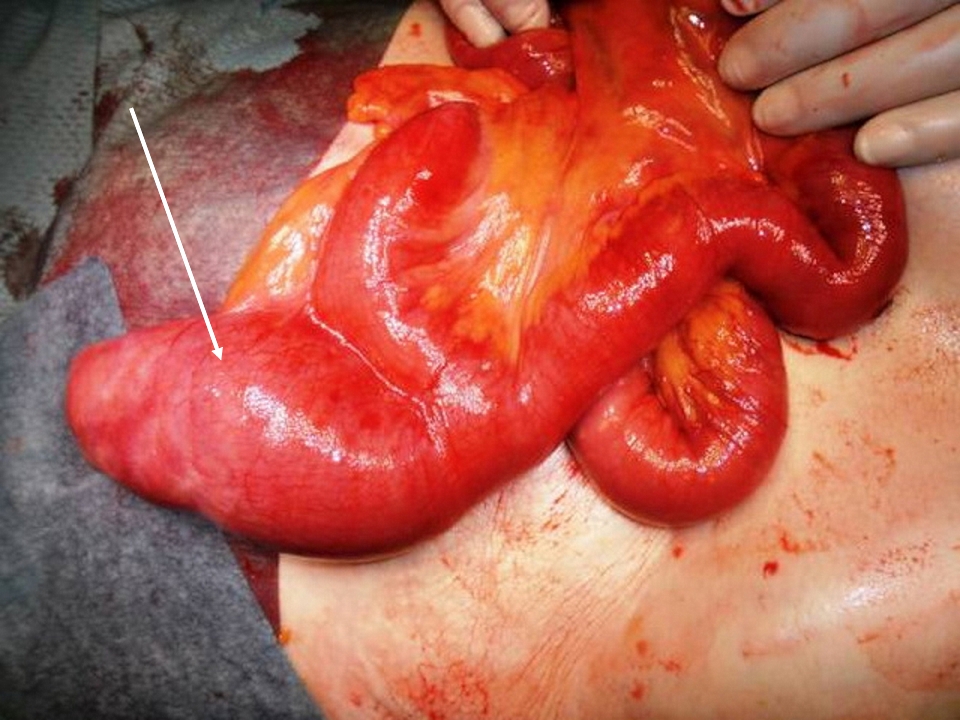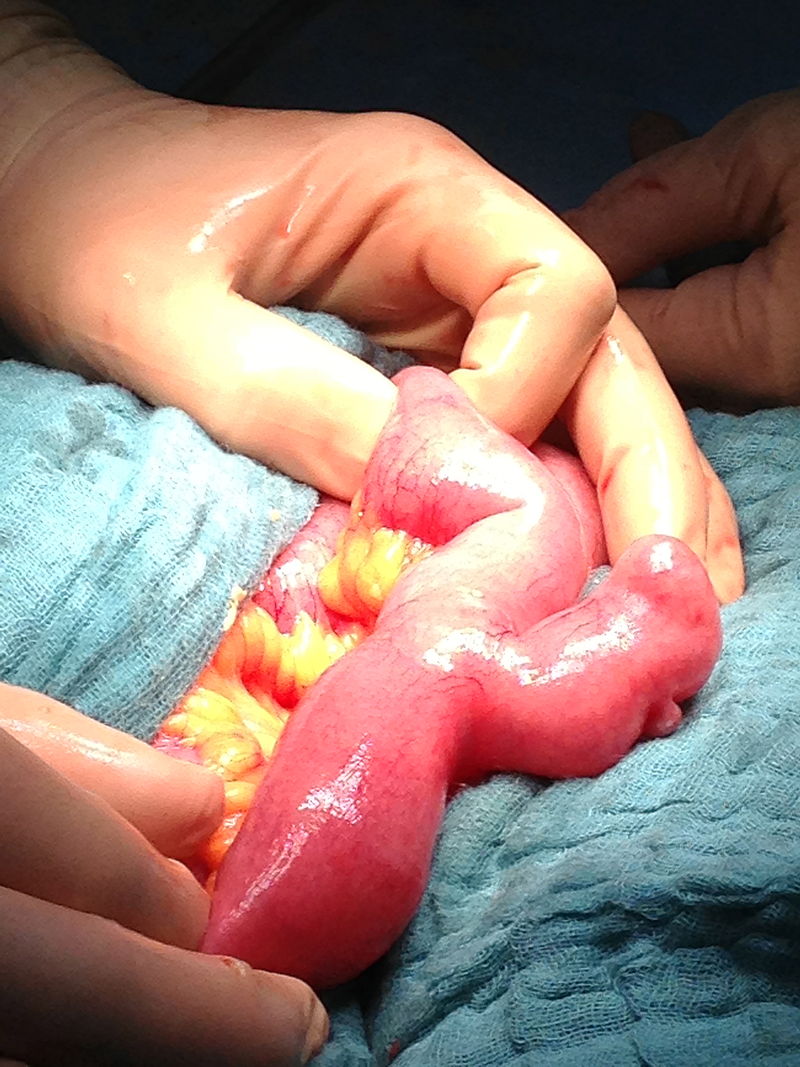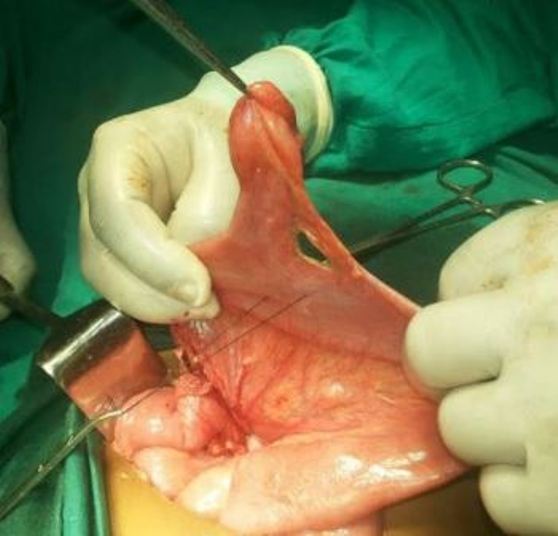[1]
Meckel's diverticulum: a systematic review., Sagar J,Kumar V,Shah DK,, Journal of the Royal Society of Medicine, 2006 Oct
[PubMed PMID: 17021300]
Level 1 (high-level) evidence
[2]
Park JJ,Wolff BG,Tollefson MK,Walsh EE,Larson DR, Meckel diverticulum: the Mayo Clinic experience with 1476 patients (1950-2002). Annals of surgery. 2005 Mar;
[PubMed PMID: 15729078]
[3]
Hansen CC,Søreide K, Systematic review of epidemiology, presentation, and management of Meckel's diverticulum in the 21st century. Medicine. 2018 Aug;
[PubMed PMID: 30170459]
Level 1 (high-level) evidence
[4]
Francis A,Kantarovich D,Khoshnam N,Alazraki AL,Patel B,Shehata BM, Pediatric Meckel's Diverticulum: Report of 208 Cases and Review of the Literature. Fetal and pediatric pathology. 2016;
[PubMed PMID: 27064958]
Level 3 (low-level) evidence
[5]
Yahchouchy EK,Marano AF,Etienne JC,Fingerhut AL, Meckel's diverticulum. Journal of the American College of Surgeons. 2001 May;
[PubMed PMID: 11333103]
[6]
Meckel's diverticulum: a review., Uppal K,Tubbs RS,Matusz P,Shaffer K,Loukas M,, Clinical anatomy (New York, N.Y.), 2011 May
[PubMed PMID: 21322060]
[7]
Meckel's diverticulum in children: a 20-year review., St-Vil D,Brandt ML,Panic S,Bensoussan AL,Blanchard H,, Journal of pediatric surgery, 1991 Nov
[PubMed PMID: 1812259]
[8]
Evola G,Piazzese E,Bonanno S,Di Stefano C,Di Fede GF,Piazza L, Complicated Littre's umbilical hernia with normal Meckel's diverticulum: A case report and review of the literature. International journal of surgery case reports. 2021 Jul;
[PubMed PMID: 34186459]
Level 3 (low-level) evidence
[9]
López-Lizárraga CR,Sánchez-Muñoz MP,Juárez-López GE,Pelayo-Orozco L,De la Cerda-Trujillo LF,Ploneda-Valencia CF, A rare case of a strangulated Littre's hernia with Meckel's diverticulum duplication. Case report and literature review. International journal of surgery case reports. 2017;
[PubMed PMID: 28273609]
Level 3 (low-level) evidence
[10]
Horkoff MJ,Smyth NG,Hunter JM, A large incarcerated Meckel's diverticulum in an inguinal hernia. International journal of surgery case reports. 2014;
[PubMed PMID: 25460431]
Level 3 (low-level) evidence
[11]
Meckel's diverticulum in children: Our 12-year experience., Rattan KN,Singh J,Dalal P,Rattan A,, African journal of paediatric surgery : AJPS, 2016 Oct-Dec
[PubMed PMID: 28051045]
[12]
Kuru S,Kismet K, Meckel's diverticulum: clinical features, diagnosis and management. Revista espanola de enfermedades digestivas : organo oficial de la Sociedad Espanola de Patologia Digestiva. 2018 Nov;
[PubMed PMID: 30032625]
[13]
Imaging manifestations of Meckel's diverticulum., Elsayes KM,Menias CO,Harvin HJ,Francis IR,, AJR. American journal of roentgenology, 2007 Jul
[PubMed PMID: 17579156]
[14]
Routh WD,Lawdahl RB,Lund E,Garcia JH,Keller FS, Meckel's diverticula: angiographic diagnosis in patients with non-acute hemorrhage and negative scintigraphy. Pediatric radiology. 1990;
[PubMed PMID: 2352792]
[16]
Kovacs M,Botstein J,Braverman S, Angiographic diagnosis of Meckel's diverticulum in an adult patient with negative scintigraphy. Journal of radiology case reports. 2017 Mar;
[PubMed PMID: 28584569]
Level 3 (low-level) evidence
[17]
Lee JM,Jeen CD,Kim SH,Lee JS,Nam SJ,Choi HS,Kim ES,Keum B, Meckel's diverticulum detected by computed tomographic enterography: report of 3 cases and review of the literature. The Turkish journal of gastroenterology : the official journal of Turkish Society of Gastroenterology. 2014 Apr;
[PubMed PMID: 25003685]
Level 3 (low-level) evidence
[18]
National trends in the surgical management of Meckel's diverticulum., Ruscher KA,Fisher JN,Hughes CD,Neff S,Lerer TJ,Hight DW,Bourque MD,Campbell BT,, Journal of pediatric surgery, 2011 May
[PubMed PMID: 21616248]
[19]
Dumper J,Mackenzie S,Mitchell P,Sutherland F,Quan ML,Mew D, Complications of Meckel's diverticula in adults. Canadian journal of surgery. Journal canadien de chirurgie. 2006 Oct;
[PubMed PMID: 17152574]



